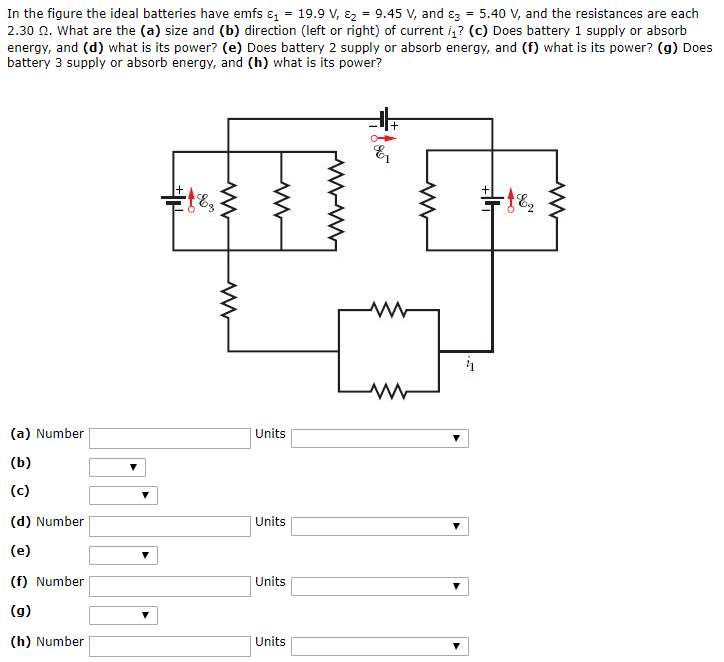In the figure the ideal batteries have emfs ε1 = 19.9 V, ε2 = 9.45 V, and ε3 = 5.40 V, and the resistances are each 2.30 Ω. What are the (a) size and (b) direction (left or right) of current i1? (c) Does battery 1 supply or absorb energy, and (d) what is its power? (e) Does battery 2 supply or absorb energy, and (f) what is its power? (g) Does battery 3 supply or absorb energy, and (h) what is its power? (a) Number Units (b) (c) (d) Number Units (e) (f) Number Units (g) (h) Number Units
